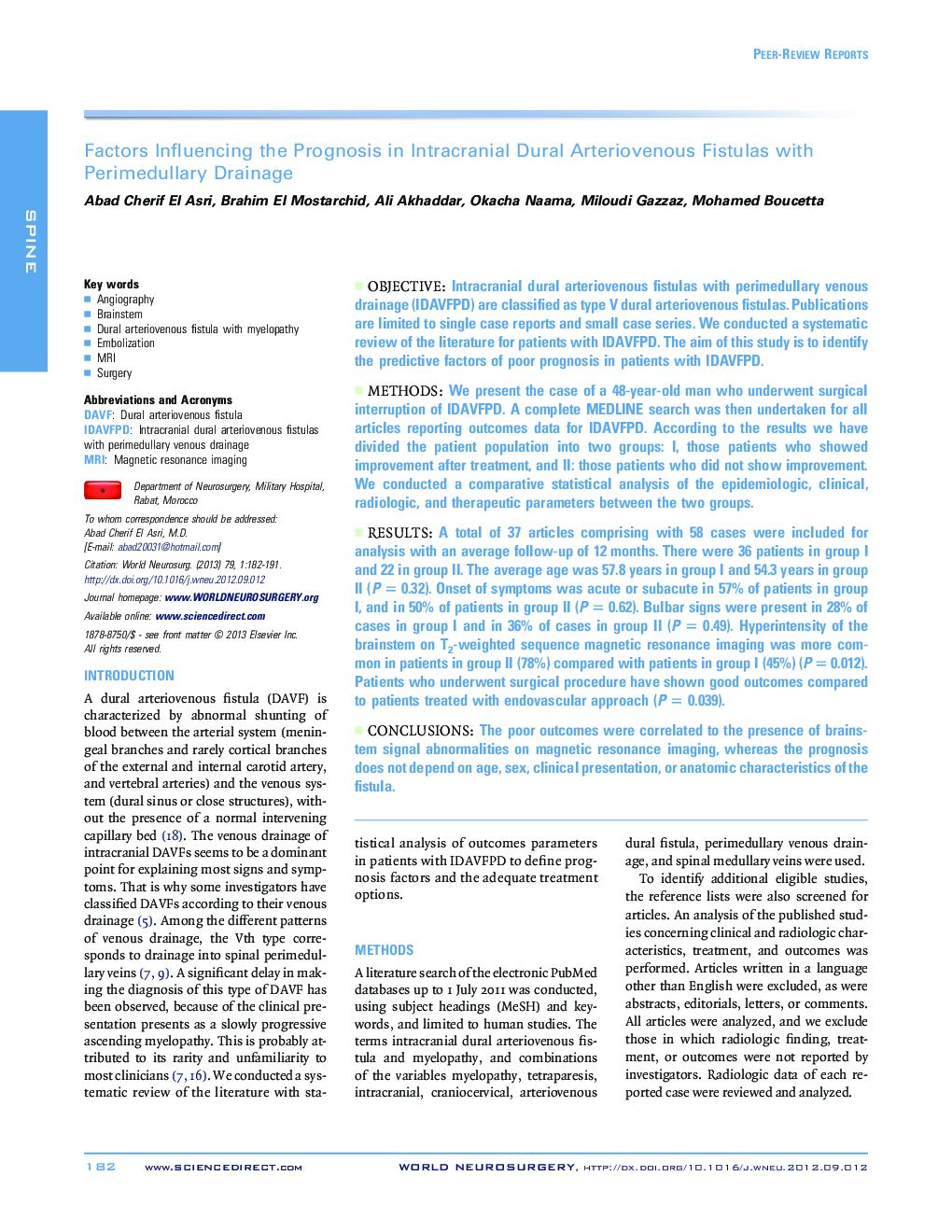| کد مقاله | کد نشریه | سال انتشار | مقاله انگلیسی | نسخه تمام متن |
|---|---|---|---|---|
| 3096520 | 1190928 | 2013 | 10 صفحه PDF | دانلود رایگان |

ObjectiveIntracranial dural arteriovenous fistulas with perimedullary venous drainage (IDAVFPD) are classified as type V dural arteriovenous fistulas. Publications are limited to single case reports and small case series. We conducted a systematic review of the literature for patients with IDAVFPD. The aim of this study is to identify the predictive factors of poor prognosis in patients with IDAVFPD.MethodsWe present the case of a 48-year-old man who underwent surgical interruption of IDAVFPD. A complete MEDLINE search was then undertaken for all articles reporting outcomes data for IDAVFPD. According to the results we have divided the patient population into two groups: I, those patients who showed improvement after treatment, and II: those patients who did not show improvement. We conducted a comparative statistical analysis of the epidemiologic, clinical, radiologic, and therapeutic parameters between the two groups.ResultsA total of 37 articles comprising with 58 cases were included for analysis with an average follow-up of 12 months. There were 36 patients in group I and 22 in group II. The average age was 57.8 years in group I and 54.3 years in group II (P = 0.32). Onset of symptoms was acute or subacute in 57% of patients in group I, and in 50% of patients in group II (P = 0.62). Bulbar signs were present in 28% of cases in group I and in 36% of cases in group II (P = 0.49). Hyperintensity of the brainstem on T2-weighted sequence magnetic resonance imaging was more common in patients in group II (78%) compared with patients in group I (45%) (P = 0.012). Patients who underwent surgical procedure have shown good outcomes compared to patients treated with endovascular approach (P = 0.039).ConclusionsThe poor outcomes were correlated to the presence of brainstem signal abnormalities on magnetic resonance imaging, whereas the prognosis does not depend on age, sex, clinical presentation, or anatomic characteristics of the fistula.
Journal: World Neurosurgery - Volume 79, Issue 1, January 2013, Pages 182–191